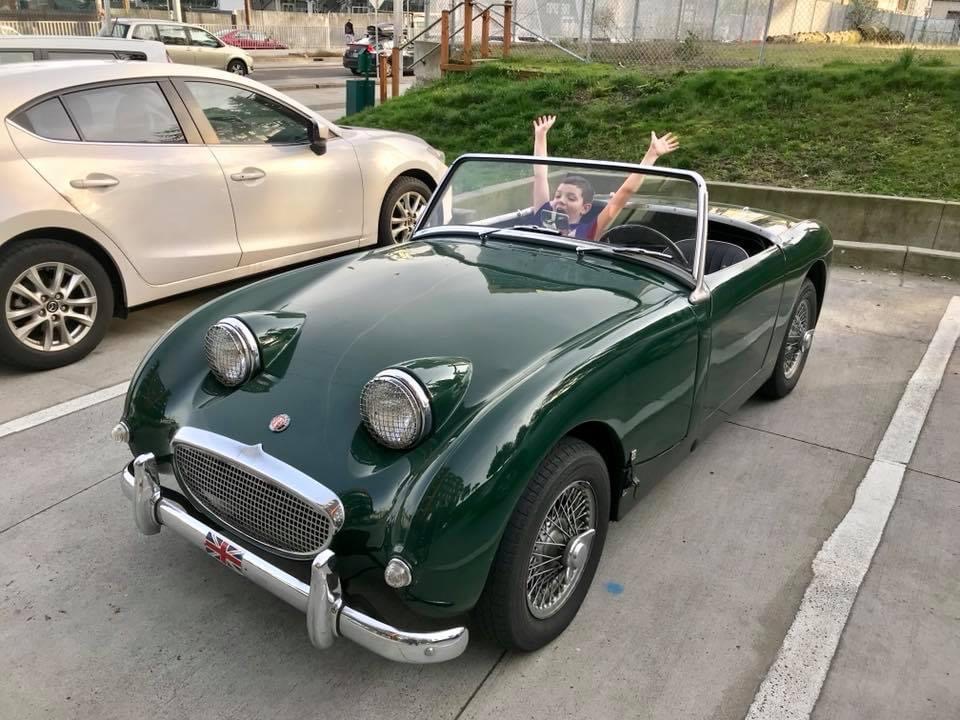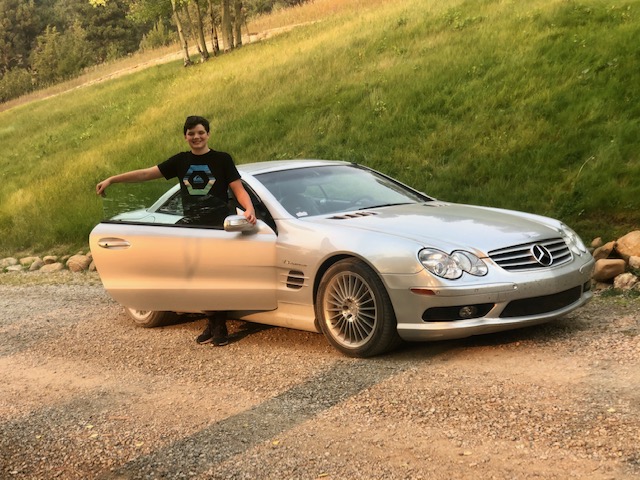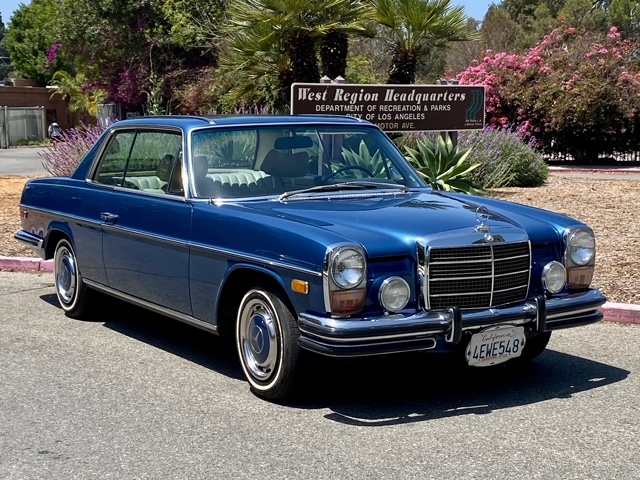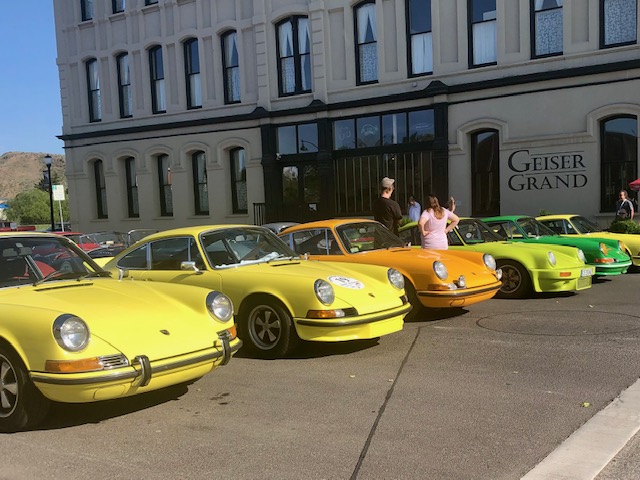What do you think the ideal cutoff date for a vintage tour should be? Or should there be one at all?
The cutoff for the SCM 1000 is 1974. We chose that year as stringent smog and safety regulations began to take effect on US cars in 1975, altering the appearance and performance of later cars.
We also entertain applications for continuation cars that were similar in later years. For instance, our 1975 Porsche 911 S is very much the same as the 1974 model. But a 1997 Carrera is a completely different animal.
Other tours have different cutoffs. For some it is as early as 1957, with liberal allowances for similar cars. Years ago, the founder of the California Mille, Martin Swig, told me he would allow my 1965 Alfa Romeo Giulia Spider Veloce on his event, as it was in the “same spirit” as the earlier Giuliettas that ran in the Mille.
Some tours have a year limitation, but include a caveat that says, “and any modern super car or sports car is welcome.”
In my experience, mixing newer cars with older ones disrupts the flavor or feel of an event.
Fifty-year-old cars are much more difficult to drive than modern ones. They also accelerate more slowly and are more challenging to brake and to negotiate turns.
At 80 mph in my Giulia Spider Veloce, I can feel the skinny tires grabbing the pavement and hoping for grip.
If I’m not in the right gear, I fall out of the power band and the car is most unhappy.
Old cars are also inherently less reliable. There is a reason we will have two tow vehicles with trailers on the SCM 1000. We had none on last year’s SCM 1000 AMG Invitational, where the oldest car entered was built in the 1980s.
The newer a car is, the less it asks from you to make it perform.
One of the things we learned from our AMG Invitational was that driving a modern car took some of the fun out of a tour. I never worried about the electrical or fuel systems failing in our 2004 Mercedes SL55 AMG. In fact, our biggest challenge was getting our luggage to fit in the miniscule trunk when the retractable hardtop was down.
Also, with newer cars it is easy to exceed posted speed limits and drive at speeds that are, frankly, dangerous on public highways.
We have been asked by some potential entrants if we would consider raising the age limit on SCM 1000 tours to 1980, or even to 2000 (those cars are now nearly 25 years old, which is one way we define a classic). Some suggest we should eliminate all age-related requirements.
As a tour presenter, we are always looking for the balance between the flavor of an event and having a full slate of entries. On one hand, having no age requirements should offer a larger field of potential entrants.
On the other, vintage car drivers might not be so enthusiastic to have their MGA passed by a McLaren F1.
I’m curious as to your thoughts here. As the years pass, should we slide the cutoff date of our event up to include more modern cars? Should there be any limitations at all? What is your ideal mix of cars?
Or do we keep the current 1975 cutoff and keep the event as is?
I look forward to your comments below.





18 responses to “Keith’s Blog: Mix Old Cars with New on Tours?”
Did the Southwest Passage with Vintage Rallies (Rich and Jean Taylor) last year with a mix including some newer sports cars, and yes, our 56 Jag was passed by McLarens, Vettes, Porsches, but who cared? Great roads, beautiful scenery, excellent venues, and wonderful car people. Certainly didn’t spoil it for us that cars didn’t have to qualify for the original Mille!
Make it a Classics rally—sliding cutoff of 25 years or older.
Hold fast to your present state. Though I do not now own a car that I could enter the 1000, hope springs eternal and if and when that day comes you are absolutely right. Will she start? Will she overheat? What fun!
I think the Mercedes 300SL would easily pass the MG Midget, even though they’re both old. So speed is not the primary influencer. My oldest sports car is a 1998, unless you count the Honda CRX or the Pontiac Firebird as sports cars. OTOH, if you make the age of the cars a rolling 25-year limit, the temptation I would think would be for people to use their newer, less scary to take on a tour, cars. And that would be a loss. It’s a difficult call.
Vintage car rallies should stay vintage.
i’d enjoy seeing super/hypercars on a tour; getting a closer look at them and watching them perform. maybe the ‘modern’ cutoff could be a small production number. wouldn’t most everyone like to se a senna on the road?
As long as you can fill the field, leave it as is. There is now a wide choice of tours, so anyone that wants to do a tour can find a tour that fits their needs.
I like leaving the age limit in place. The uncertainty of reliability is part of my rush. It forces the owner to spend some time (and , yes, money) to get/ keep their classic car road-worthy. If I want to see new cars, there are many places to go, but an older car? The sport is what it is because of the older car. Money buys a new/ newer car. How many drivers of newer cars really know or cherish the history of the marque they are driving? Respect the history – it is what you here today.
As the original-owner of a 1959 Porsche coupe (black with Rudge knock-of wheels & first time I met Keith when he drove his Alfa) in which I participated in the 1995 and 1996 California Mille and again in 1997 in my original-owner 1958 Porsche Convertible D, I am convinced that a year limitation is appopriate for some of the many similar style tours now popular. However, later model vehicles are OK for tours designed around them.
Call me old-fashioned (I’m 88), but I’m also convinced that the people themselves have a different mind-set towards what those orginal tours were conceived to represent. For example, I believe few owners of a 1995 Ferrari (now over 25 years old) have much, if any any, interest in the cameraderie potential of the owner of a 60+ year old Ferrari, much less a 60 year old Porsche, Alfa or other popular sports cars of that era.
The adage of “It’s more fun to drive a slow car fast, than it is to drive a fast car slow” couldn’t be more applicable.
The type of route selected for differing vintage sports cars should also determine the age limitation, both the latest and possibly even the earliest.
Dale H Moody (continuous SCM subscriber for over 25 years)
I think you should keep your cutoff date but allow the organizers to include newer, unusual or significant cars.
I would exclude anything between 1975-85 as terminally affected by smog and safety regulations. Then allow 1986-90 as models mostly recovered due to improved engineering. I had a 1987 RX-7 that certainly had a more 1960s feel to it. Exception to rule-any NA model Miata shows how the classics should have been Now does MR2 Toyota deserve exception.
Guess this is a tougher issue than I expected.
I think the tour should remain pre 1974 cars. I go to Canada quite often from the mid-south, I have no second thoughts about driving my 2002 MB CLK320 with 152K miles on the clock there and back, total 2,500 + miles. However, I will not drive my 1964 Alfa Romeo spider that far without a tow truck with a car hauler behind me. The Alfa has 76,788 original miles on it.
I’m all for an old car rally (pre-1975), and a separate “new” car rally (e.g., AMG). IMHO, the more rallies the merrier, but I think the objectives and the routes are dependent on the vehicles participating, and the old dogs do not like the same kinds of roads (and speeds) as the new. Regrettably, I do not have a qualifying pre-1975 sports car at this time, but I’ve had them in the past, and an old car rally might suffer with newer rides on the trip. I think the tow rigs should be entirely up to date, however….
You raise a very good and valid question. Ideally I like to tour on country roads with curves, possibly in the hills/ mountains. Cars of a certain era seem to drive a similar pace, a better time for all. Rallying in a 1950’s or 1960’s cars are fun. It’s just not pleasant to have a more modern car parked on your bumper wanting to pass. It is also not pleasant to be in a more modern classic being stuck behind a slow older car. Eventually someone might be tempted to make a silly dangerous overtaking move endangering the event and the “fun factor “. As an organizer of the DC British Reliability Run. I myself in my 1990 XJS was stuck following behind a1965 Austin Healey, a car I lent to a friend struggled to pass. My pace was slightly faster.
We used to allow entry to a 25 year or older British car. We now limit the entry to 1979 or older British or European sports or GT cars. We hope this will maintain the flavor of the event, be safer, but open it up to a larger audience. This year I will be driving a Flaminia.
Pure vintage tours are attractive to me in a way that tours with mixed groupings of cars are not.
Keep it pure if the numbers work for you – and I suspect they do!
The more the merrier! I’ve no prob being passed by a modern supercar – I’m built for comfort!(’88 Thunderbird Turbo Coupe 5 speed)
What an interesting question Keith…and it is one for which I have two answers though they complement one another. I am involved with two different events that cover about 1,000 miles over four days and I treat them very differently.
The first is Driving for Kids, the Colorado version of a British Reliability Run. Now it is more a nostalgic tribute to the spirit of “Motoring”. We accept pre 1980 British cars plus a few that carry the spirit of the old British car. That’s right; we admit a few each year that fit the spirit of “Motoring” as opposed to the “mad dash to get there.” In other words, it is a fun weekend with fellow owners of old British cars and all the camaraderie/security that comes with such a group. For example, last year we had a 2011 Mini Cooper S because the older couple, long time British car owners, wanted to be with us and raise money for our charity beneficiary. They most assuredly drove in the spirit of the event and we were delighted to have them. And, we do have a sweep vehicle with trailer and mechanic if needed though we rarely do.
The other event is with our local Lotus Colorado group (aka LOCO and more apropos than one might expect) where we have supercharged Evora and Elise cars running with our old Elites, Elans and Europas and it is a test for us in the old cars. The pace is greater, the passing more dramatic and the old cars arrive at the lunch or dinner place last. It is still very much worth participating but nowhere near as congenial even though the friendships here predate those on Driving for Kids. I now take my “modern” 1991 Elan M100 on these drives to be more “in synch” with the spirit of this weekend.
In the spirit of answering your question, I think you are correct in keeping the old cars together. As you so aptly put it, “…mixing newer cars with older ones disrupts the flavor or feel of an event.”
DEFINITELY limit the age of the vehicles to vintage units. Just look at your pictures that you posted- the older blue Mercedes and the AMG. Same manufacturer, but totally different vehicles. I have been on vintage motorcycle runs in the past, usually pre-1975 Harleys, and then someone shows up with a Ninja! It completely takes away from the spirit of the run. I’d rather have a smaller field of relevant entries than just open it up to any vehicle.